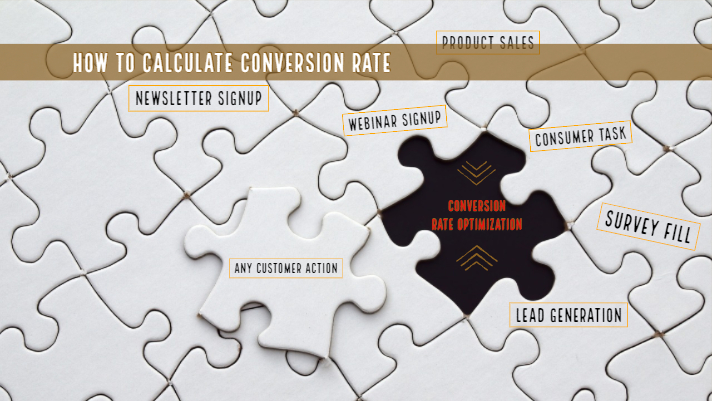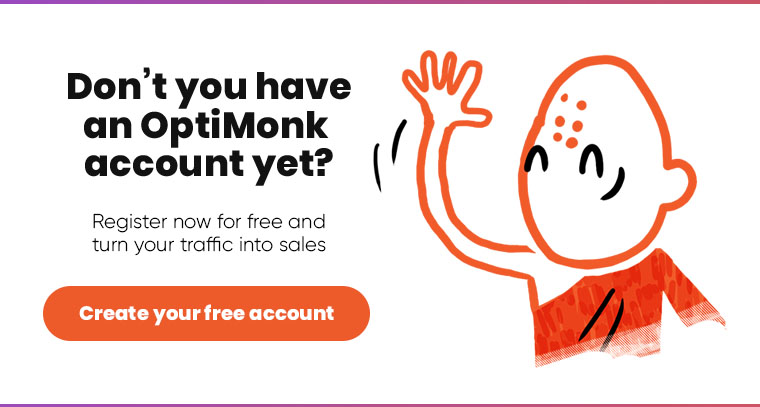On a global level (the entirety of your website), your website conversion rate is the sum of all your website optimization efforts, providing an indication of future sales by calculating the percentage conversion from the number of sales from the total number of website visitors.
In terms of conversion rate optimization, this is of little value because it does not help you to determine what to improve. For CRO purposes, it’s necessary to monitor and measure on a micro-level. Every user action that leads to a goal completion can be measured, this provides a benchmark on which to improve over time.
Through iterative conversion rate optimization tasks like A/B testing, it’s possible to determine how good your marketing campaigns are at convincing website visitors to do what you want and then improve on it. The goal is to make it the best it can be.
Since any campaign can be measured, every campaign of value should be measured. If you’re not measuring every micro-conversion opportunity then how can you know what needs to be optimized via CRO techniques?
It’s the collective iterative optimization of each and every micro-conversion point that builds up your overall website conversion rate to be the best it can be.
The concept of value here is any action that allows you to learn more about the customer, not just as to whether the customer buys or not, even if the goal is to increase sales through increased personalization.
Campaign conversion rates provide hard data on what your customers are interested in, (or not) and therefore provide a means to segment website visitors accordingly.
Your campaigns should be designed to get website visitors to carry out a task or action that benefits them and your business. This can only be achieved effectively through personalization.
In 2019, this is likely to be via cross-channel touchpoints, and across numerous devices, so you need to be able to measure any action on any device (this can be done with Google Analytics). Anything you want your potential customers to carry out during their customer journey down your website conversion funnel.
These tasks typically come in the form of a form fill of some description or to incentivize sharing in exchange for a free product.
- Feedback form (perhaps with a custom field to collect Pschograpic data).
- Fill custom field to Download a pdf
- Share on social media to unlock content
- Watch a video / Interaction with learning material
It all depends on what you are measuring or testing, when I speak of a task I refer to what Google analytics defines as a goal. No matter your goal/task or action, the question of how to calculate the conversion rate is the same. A goal could include:
- Webinar signups
- Survey completions
- Newsletter subscriptions
- Ecommerce sales
- Customer Service Inquiries
A goal can be literally anything, any task or action you want your website visitors to do, the task conversion rate tells you how successful you are at getting your website visitors to complete the action.
Remember, each and every micro-conversion contributes to your overall Website conversion.
How to Calculate Converison Rate
Within a time frame take the number of conversions and divide it by the total number of visitors and then multiply it by 100% to calculate the conversion rate percentage.
- This calculation can be applied to any task that you set for your website visitors to perform.
- Measure macro or micro-goals. How far you go really depends on available technical expertise and associated resources. Try to establish ROI not forgetting optimization today pays over and over, day after day.
Advertising
One of the most powerful reasons to be fanatical about conversion rates is if your business is using or is intending to use digital advertising.
By improving your conversion rate at micro conversion points on-site you will achieve higher conversions rates when you deploy PPC or retarget off-site to drive traffic into your conversion funnel. Tailor your campaigns to target the right audience.
The Downsides to Measuring Conversion Rates
There are several downsides to measuring conversion rates the manual – spreadsheet way.
- You don’t know what a good conversion rate is at the start, and therefore your conversion rate should always be taken as a periodical benchmark on which to improve upon.
- Conversion rate data from elsewhere should not be used because conversion rates vary from industry to industry, location to location, population to population and a wide variety of other factors / variables.
- Highly time consuming.
A Better Way to Manage Micro Conversions
Let’s face it, Google Analytics is complicated, it tracks so many different things the problems is that there is a disconnect, to be effective in making changes you need the ability to make changes to content quickly and simply and track the results immediately.
This is why conversion rate Optimization tools have become so popular, essential even.
There are numerous CRO tools out there, personally, I use OptiMonk because they’re innovative and easy to use. The key benefit of CRO tools, in general, is that it allows you to create micro-conversion points at any point along the customer journey down the conversion funnel.
In addition, it enables the creation of variants to split test, all the features for tracking and measuring conversion are included.
In fact, it’s automatic, enabling you to see the results of your split testing next to your campaigns (no messy spreadsheets needed). It enables the segmentation of users according to the actions they take through email automation integration.
There are several things to be aware of as you travel this road.
- Analytics data may not match your GA data, doesn’t mean it’s wrong but rather they are measuring slightly different things.
- If your micro-conversion message is too different you might end up targeting a different audience, invalidating the results of your split tests.
Conclusion
From my experience, most businesses don’t even map out customer personas to a journey map, create personalized content for each persona or even have a conversion funnel, let alone predefined micro-conversion opportunities in place to onboard website visitors (get them used to make decisions).
Most businesses utterly fail at Google Ads and Facebook Ads, because they are not tracking conversion rates properly, even though most analytical tools will calculate this for you if configured correctly.
Approximately 70-80% of advertising budgets are wasted because Google Analytics is improperly configured or not configured at all or because businesses failed to carry out the conversion rate optimization before paying for advertising.
Disclaimer: This article was written for OptiMonk, so you might say I’m biased. However, the proof is in the pudding. Compare it to ANY CRO tool, placing special attention on what you get for your money and you will see OptiMonk is hands down the best conversion rate optimization tool available for any business size.













